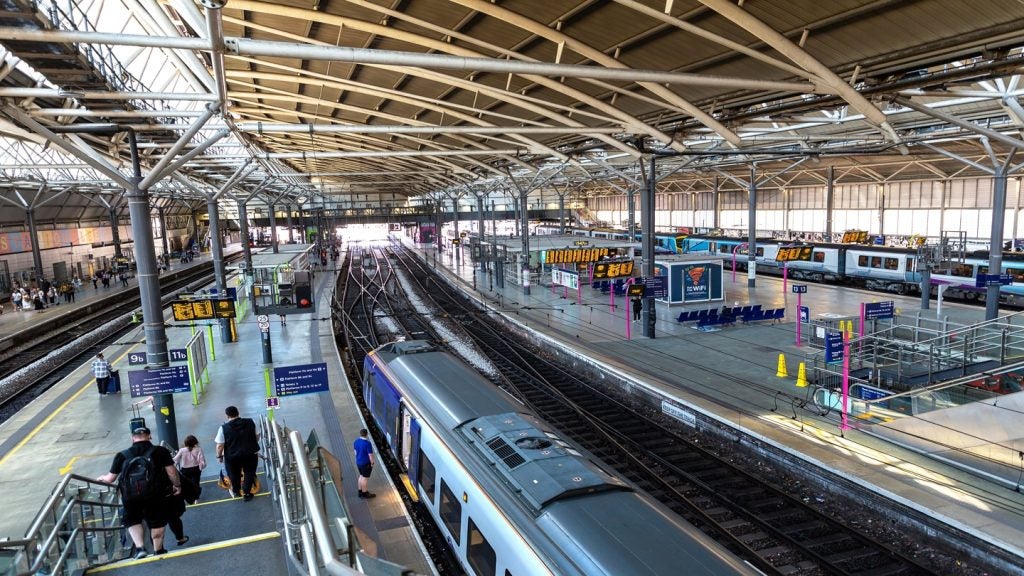Railway track engineering and construction is one of the foremost priorities for modern rail operators. The track system is the most critical part of the railway infrastructure that ensures a safe and smooth train ride for train passengers. A high-quality track and associated infrastructure are essential to ensure train safety and punctuality.
Railway tracks need to be engineered carefully and checked for design defects, misalignments, faulty formations and sub-soil fluctuations during their design and construction.
Leading railway track engineering and construction contractors
Railway Technology has listed leading suppliers and providers of railway concrete sleepers, railway fishplates, railway surveying solutions, level crossing systems, welding equipment and welding services, drainage solutions, as well as retaining structures and reinforced earth systems.
The list also includes railway track design and maintenance contractors, track engineering service providers, railway slab track construction and other railway infrastructure construction contractors.
The information contained in the download document is designed for railway project managers, railway track alignment design engineers, senior track work engineers, railway civil engineers, permanent way engineers and inspectors, chief track experts and track maintenance engineers.
The document contains detailed information on the suppliers and their product lines, alongside contact details to aid your purchasing decision.
Railway track engineering and design
The two rails of a track cannot be laid directly on the ground and require certain key components to support the heavy loads of the trains that are moving at a speed. The two rails also need to be laid at a prescribed distance to enable the wheels of the train to move safely over them. The main components and design elements of a railway track include:
- Steel rails that provide a surface for movement of the train
- Railway sleepers that support the rails and absorb vibrations
- Railway fish plates and fish bolts used to connect the ends of two steel rails
- Rail fastening systems used to fasten the steel rails to the railway sleepers
- Ballast (broken stone) packed below the sleepers
- Subgrade and embankment are the formation below the ballast
- Railway switch used for converting track
Railway tracks can also be ballast-less, known as slab track systems that offer more stability and enable faster railway construction. Slab track is mostly used for high-speed railway, heavy rail, and light rail systems.
Railway slab track construction, pros and cons
A slab track consists of precast reinforced concrete (RC) slab, which transfers the load to the subgrade. The steel rails are fastened to the concrete slab or to another slab system on the concrete slab. Slab track systems require less maintenance, offer high performance and durability, reduce noise and vibration and provide increased comfort for passengers.
Slab tracks, however, have a few disadvantages in terms of the high initial investment costs. The track also lacks the possibility for improvement and cannot be laid in areas that are prone to earthquakes or have soft dirt roads.
FAQs
What is railway track engineering and why is it crucial for efficient railway operations?
Railway track engineering involves the comprehensive design, construction, and maintenance of the track infrastructure that supports railway systems. The primary components of a track include steel rails, sleepers (ties), ballast, and fasteners. Each part plays a critical role in distributing the weight of the trains, maintaining the alignment of the tracks, and ensuring smooth and safe train movements. Railway engineers must consider factors like load-bearing capacity, thermal expansion, and vibration dampening when designing tracks. Properly engineered tracks ensure operational efficiency, reduced wear on rolling stock, and minimal maintenance requirements.
What are the different types of railway track systems, and how do they differ?
The two main types of railway track systems are ballasted and slab tracks. Ballasted tracks use crushed stone to provide stability, absorb vibration, and drain water, while slab tracks use reinforced concrete for rigidity and durability. Ballasted tracks are common for standard and freight railways due to their lower cost and ease of repair. In contrast, slab tracks are preferred for high-speed rail and urban transit systems because of their ability to support higher speeds, longer durability, and reduced maintenance, though they come with higher initial construction costs.
What are the essential factors in railway track construction?
Track construction must take into account several factors, including soil conditions, alignment, drainage, and durability. Engineers conduct geotechnical surveys to ensure the ground can support the weight of the rail infrastructure. Precise track alignment is necessary to accommodate speed and reduce wear. Drainage systems are critical to preventing water damage to the ballast or slab, ensuring longevity. Additionally, the choice of materials, such as steel for rails and concrete or treated timber for sleepers, significantly impacts the track’s long-term performance and maintenance needs.
How do engineers ensure the safety and reliability of railway tracks?
Safety and reliability are achieved through careful design, regular inspections, and advanced monitoring technologies. Engineers use rail profiling, which ensures the rail’s shape matches design specifications and prevents excessive wear. Ultrasonic testing can detect internal flaws or cracks in rails before they lead to failure. Automated track inspection vehicles regularly survey the track for alignment and gauge defects. Additionally, load distribution and stress tests are conducted to evaluate how well the tracks bear the weight of trains, ensuring that any potential weak points are addressed promptly.
Who are the leading companies in railway track engineering and construction?
Prominent companies in the railway track engineering sector include global players such as Alstom, Siemens, and Bombardier, who are involved in large-scale track construction projects across different countries. These firms offer end-to-end solutions that encompass planning, design, materials supply, and construction of both traditional and high-speed railway tracks. They also contribute to innovations in materials, monitoring technologies, and energy-efficient construction techniques. For urban rail systems, firms like Strukton Rail and SYSTRA specialise in sustainable and integrated track solutions that meet modern transit demands.






